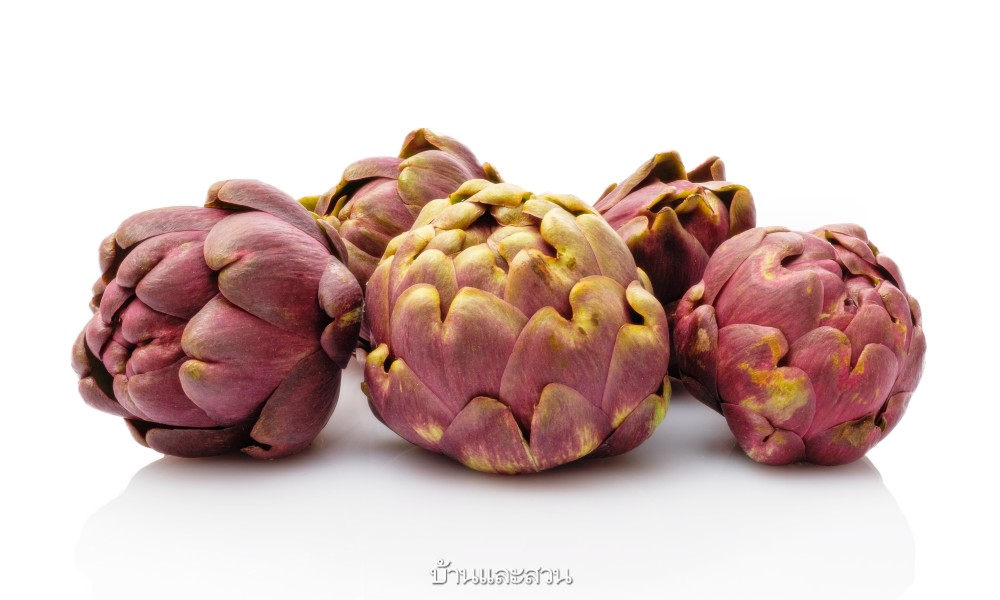Recently, if anyone playing TikTok will see a feed about trying. Taste different types of artichokes Until it became a virus that made everyone want to find this lotus-like vegetable to try and eat.
Artichoke was actually discovered more than 3,000 years ago as a food and medicine for the Egyptians, Greeks, and ancient Romans. This plant, scientifically known as Cynara scolymus , belongs to the lone family Asteraceae. with sunflowers It is a temperate plant originating in the Mediterranean Sea. and purple leaf varieties The shape of the stem is transparent, about 0.50-1 meter high, the flower is a solid petal, tightly stacked in several layers. Both species have flowers that look the same. give the same taste It has a long harvest time of 5-10 years. Leave it as a stump 8-10 inches high to allow the buds to burst into new trees.

green leaf artichoke

purple leaf artichoke
The most popular part of artichokes is the flowers by cutting off the outer sepals. and then eat around the inner petals You can eat them both fresh and put them in salads. Or it can be steamed, blanched, dipped in batter, and can also be pickled. or to cut and dry You can then drink it as tea.
Artichokes are also a nutritious plant that has many health benefits such as inulin, a non-calorie fiber that inhibits the digestion of starches into sugars. Reduce the absorption of sugar into the bloodstream Help blood sugar levels rise slowly. It is suitable for people with diabetes, obesity, also contains flavonoids. Helps prevent liver cells from being destroyed. And strengthen liver cells after excreting waste from the body.
As for the taste of artichokes, it will be bland and oily. Some people say it’s like eating nuts, jackfruit seeds, and banana blossoms. This is up to each individual’s tongue. But with the many benefits of artichokes It’s worth trying to find some as well.








